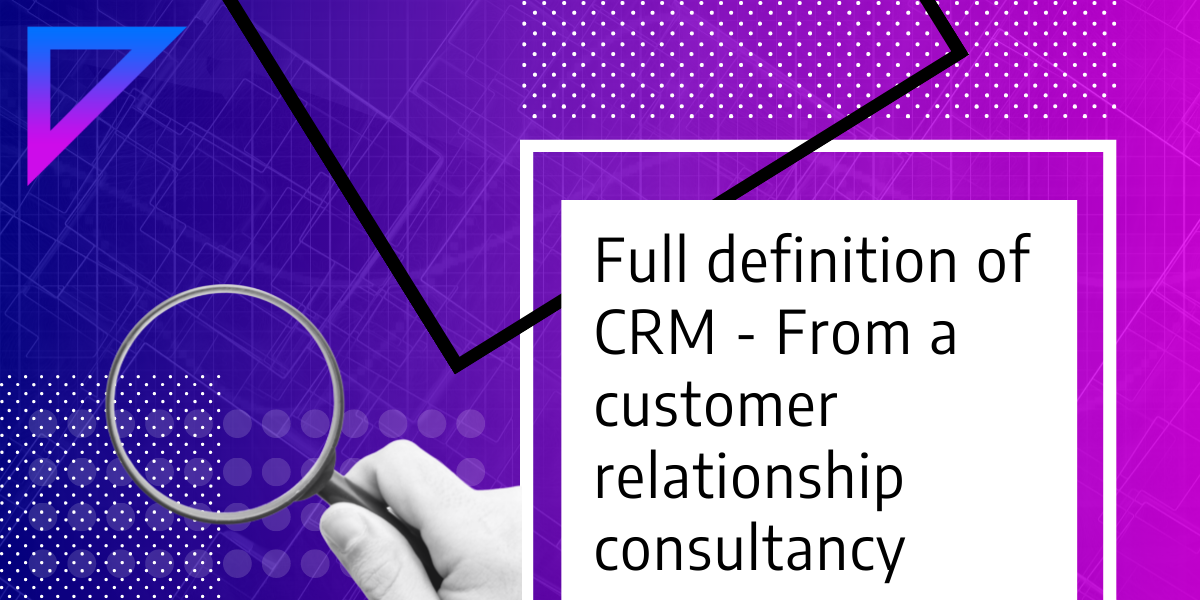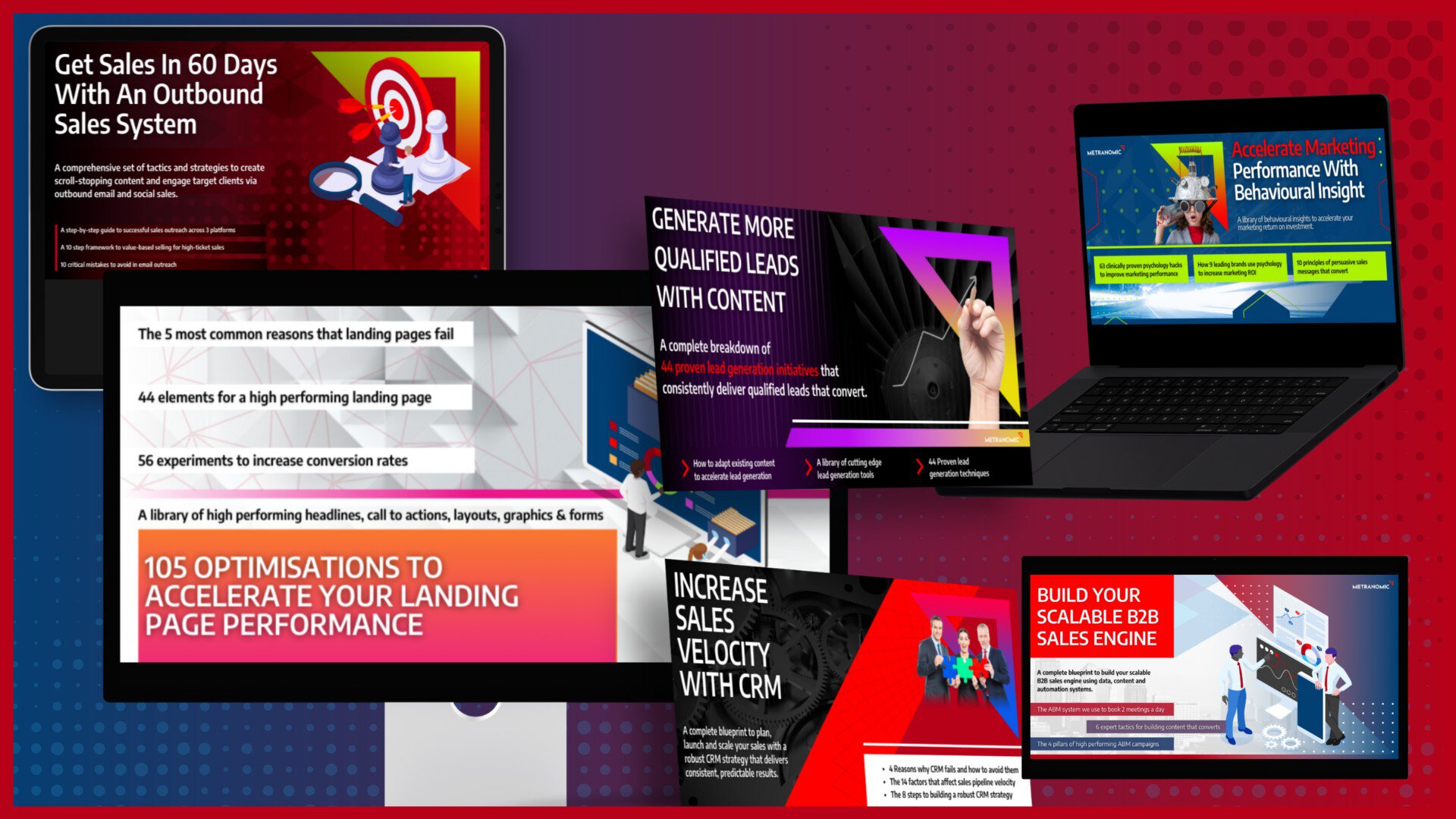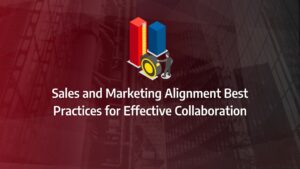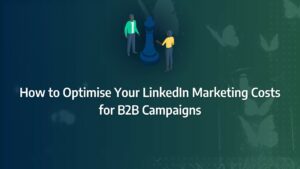Navigating the complexities of CRM strategy in the B2B tech industry requires more than just the right software—it demands a holistic approach that integrates customer insights, data management, and seamless system integration. Whether you’re struggling with customer segmentation, or finding it challenging to implement CRM tactics effectively, this guide is your roadmap to mastering CRM strategy.
We’ll walk you through each step, from defining your CRM objectives to integrating advanced tools that will elevate your customer relationships and drive growth.
- Comprehensive CRM Strategy: Develop a holistic CRM strategy that goes beyond software to include customer segmentation, journey mapping, and data management, ensuring a well-rounded approach.
- Customer Segmentation: Identify and segment customers based on industry, size, and needs to tailor your CRM communications and strategies for maximum impact.
- Journey Mapping: Create detailed customer journey maps to personalise every touchpoint, enhancing the overall customer experience and driving engagement.
- Data-Driven Insights: Leverage behavioural data and transaction history to inform your CRM strategies, enabling more targeted and effective customer interactions.
- Seamless Integration: Ensure your CRM system integrates smoothly with other business tools like ERP and marketing automation platforms for a complete view of customer data.
- Actionable CRM Tactics: Implement specific CRM tactics such as automated follow-ups and AI-driven sales forecasts to improve efficiency and customer satisfaction.
- Addressing Implementation Challenges: Tackle common CRM implementation challenges in B2B tech, such as data management and user adoption, with strategic planning and training.
- Continuous Optimisation: Regularly audit and refine your CRM processes to keep them aligned with changing market conditions and customer expectations.
Before we delve into the details, let’s clarify some jargon.
At its core, customer relationship management (CRM) is the magic ingredient that captivates your customers. It involves understanding, engaging, and nurturing lasting relationships with them.
CRM software acts as your technological companion. It’s a suite of digital tools designed to organise, automate, and synchronise customer interactions.
Your CRM strategy, which is the focus of this article, serves as the blueprint to keep customers happy, engaged, and loyal. It’s about harnessing customer insights to make your business truly compelling. While having CRM software isn’t essential to implement your strategy, it significantly enhances effectiveness.
What Matters Most?
Building your CRM strategy around customer experience is crucial for fostering deeper engagement and loyalty. Clients often discover that this focus leads to enhanced business outcomes. Aligning CRM initiatives with overall business objectives ensures that every effort contributes meaningfully, typically resulting in more cohesive marketing and sales processes. Additionally, prioritising data quality and governance allows organisations to maximise the effectiveness of their CRM systems, enabling informed decision-making based on reliable data.Get In Touch
Benefits of CRM Implementation
Before we discuss how to implement a CRM strategy, let’s address a crucial question: Is it worth the effort?
Increased Sales
An effectively implemented CRM system empowers your team to close more deals. By consolidating essential data in one place and keeping it updated in real-time, CRM can significantly boost your bottom line. It enhances visibility into the sales pipeline, enabling you to monitor the status and conversion likelihood of your current opportunities.
Enhanced Customer Satisfaction and Retention
Proactive customer service can vastly improve your market position. To delight and retain more customers, you must enhance your interactions. This is achievable with a CRM programme that effectively improves customer engagement and boosts retention levels.
Improved Business Decisions
A well-implemented CRM with robust reporting capabilities provides better visibility into your business operations. It allows you to make more accurate forecasts and plan for the future. With advanced analytics and custom reporting, you can visualise business data in real-time and find ways to maximise operational efficiency.
Here are some of the top benefits of a CRM strategy:
- Provide an enjoyable customer experience at every touchpoint of the customer journey, fostering loyalty.
- Strengthen collaboration between sales, marketing, and customer service teams.
- Quickly identify the most valuable leads and opportunities, and move them through the sales pipeline with marketing automation.
- Track leads and customers as they progress through the sales funnel.
- Segment contacts into effective target audiences.
- Run targeted marketing campaigns.
- Offer data insights for sales forecasting and inform future business strategies.
By integrating these elements into your CRM programme, you can create a comprehensive and effective b2b crm strategy.
Remember, a successful CRM strategy not only focuses on the technical aspects but also considers the human element of customer relationships.
Source: FreshWorks
CRM Strategy Implementation Methodology
1. Complete an Audit
When embarking on your CRM strategy, the first step is to conduct a thorough audit of your existing data. This involves meticulously reviewing the information you currently possess and identifying any gaps.
Key data points to consider include:
- Contact Details: Ensure you have accurate contact information to facilitate outreach.
- Purchase History and Frequency: Analyse what products your customers buy and how often they purchase.
- Value of Purchases: Identify high-spending customers.
- Personal Preferences: Understand what your customers like and dislike.
- Demographics: Gather broad information such as age, location, and other demographic details.
The goal of this step is to gain a comprehensive understanding of your current data landscape. This will help you determine what additional information is needed to enrich your CRM strategy.
2. Define Your Target Customer with Buyer Personas
Creating detailed buyer personas is crucial for a successful CRM strategy. These personas represent your ideal customers and are based on thorough market research and insights from your marketing team. They should include demographic and behavioural characteristics, interests, challenges, and aspirations.
Research methods to develop buyer personas include:
- Interviewing your sales and customer service teams
- Studying different customer profiles and conducting direct interviews
- Sending out customer surveys
- Holding focus groups with customers or clients
- Using Google Analytics to gather demographic data about website visitors
Understanding who your customers are and why they purchase from you is essential for maintaining strong customer relationships and attracting high-quality leads. A clearly defined buyer profile ensures that your teams are focused on the true needs and expectations of your customers, preventing wasted efforts on unsuitable leads.
3. Plan How to Provide a 360° Customer Experience
With the initial steps of your CRM strategy highlighting areas for improvement, the next phase involves optimising your internal processes to provide a comprehensive customer experience.
Conduct an audit of roles and responsibilities within your organisation to ensure all necessary aspects are covered. Consider the following areas for process optimisation:
- Presales: Assess how effectively you analyse customer needs, gather information, and prepare business cases.
- Sales Processes: Identify sales tasks that can be automated to enhance efficiency.
- Customer Relationship Management: Ensure your offers are tailored to customer needs and that your communications are personalised and relevant.
- After-sales: Evaluate the support systems in place to resolve customer issues promptly. Gather feedback on the quality of your customer service and determine the need for regular follow-ups.
In summary, continuously ask yourself, “How can I do it better?” and implement the necessary changes within your organisation to enhance your CRM programme. By following these steps, you will establish a robust CRM strategy that leverages the power of b2b CRM strategies to drive business success.
Source: Freshworks
4. Review and Select a CRM Technology Provider
Selecting the right CRM technology provider is a critical step in your CRM strategy. While we highly endorse HubSpot for its powerful capabilities, it’s essential to consider all available options to find the best fit for your business needs. Evaluate the features, costs, and benefits of various CRM systems to ensure you choose one that meets your requirements without paying for unnecessary features.
Conduct a thorough risk assessment during this selection process. When transitioning from your old system to a new one, potential risks include:
- Loss of Data: Some data might be difficult to recover.
- Loss of Time: Transitions can slow down operations.
- Data Corruption: Errors may not be immediately apparent.
- Loss of Functionality: Features you previously used might be unavailable.
To mitigate these risks, perform a sample data transfer. If using a data transfer partner, they should conduct a data quality audit on a test sample before a full transfer.
5. Prepare Your Data and Build Your Team
This stage offers a prime opportunity to clean and organise your data. Remove outdated or irrelevant information to ensure your data is accurate and complete. Identify the data fields you’ll need moving forward to enhance your CRM strategy.
Simultaneously, assemble a dedicated team to manage the CRM programme implementation. This team may comprise in-house staff and external experts. Key roles include:
- Project Manager: Oversees the entire project.
- Data Analyst Lead: Manages data migration.
- Systems Engineer: Handles technical and logistical aspects.
- Application Developer: Ensures the CRM system functions effectively.
Effective leadership is vital for a successful roll-out. Ensure all key personnel, including management, sales, marketing, customer service, and R&D, are fully committed to and understand the benefits of the CRM programme.
6. Train Your Team
Training your team is essential for the success of your CRM strategy. Here’s how to optimise their training:
- Assemble the Right Team Members: Involve sales, customer service, marketing, and any other relevant departments.
- Provide Ongoing Support and Resources: One-off training sessions are insufficient. Continually communicate the benefits of the CRM strategy and provide comprehensive documentation and thorough onboarding processes if deploying new software.
- Embrace Continuous Learning: Foster a culture of continuous learning and knowledge sharing to prevent siloed information.
A well-trained team is crucial for delivering exceptional customer experiences and achieving the full potential of your CRM strategy.
7. Segment and Personalise with CRM Data
With CRM software in place, you can develop detailed customer insights and segment your audience based on shared characteristics. Segment contacts by purchase frequency, stage in the customer journey, or purchase history.
Create targeted and personalised content for each segment. Examples include:
- Anniversary Messages: Like Spotify’s Wrapped campaign, celebrate milestones with your customers.
- Frequent Shopper Campaigns: Tailor messages for loyal customers.
- Seasonal Discounts: Offer back-to-school discounts for young adults.
- Location-Based Promotions: Market city-specific products to urban customers.
Personalising content for different audience groups enhances engagement and drives better results.
Our Tactical Recommendations
Utilising customer journey mapping is vital for developing effective CRM strategies, as it highlights key touchpoints and engagement opportunities. Clients often find that leveraging automation for routine tasks significantly enhances operational efficiency, allowing teams to focus on activities that drive growth. Furthermore, investing in training and fostering a supportive culture around CRM tools empowers teams to use these systems effectively, typically leading to improved adoption and utilisation.Get In Touch
What common pitfalls should I avoid in my CRM strategy implementation?
Issue 1: Failure of Stakeholder Adoption and Use of the System
“A good CRM implementation is a disruptive one.” – Salesforce
A successful CRM strategy is not merely an electronic upgrade from traditional spreadsheet methods. Today’s CRM systems are sophisticated software packages designed to integrate and streamline numerous workflows and processes within a business.
Stakeholders in modern CRM projects often include management, administrators, and operations teams, not just sales representatives. For a CRM strategy to succeed, all these employees must recognise that “business as usual” will transform significantly. Comprehensive training and a thorough understanding of the advantages of integrating their roles with other departments are essential.
Once the new CRM system is implemented, change management is critical to encourage adoption and ongoing use. Management, along with an effective onboarding team from the CRM provider, must demonstrate the benefits and help stakeholders navigate the inevitable learning curve and initial frustrations.
Issue 2: No Executive Buy-In
“While your sales and marketing departments may easily grasp the value of a CRM, the advantages might not be as obvious to other departments. This can even apply to executives.” – FayeDigital
For any business, the primary focus is making money, a priority for the executive team. They may be concerned about the financial implications of a new CRM system, particularly since the benefits may not always be immediately tangible. Factors like time saved on projects and reduced lost opportunities can be difficult to quantify. Executives need to understand all strategic aspects of a comprehensive CRM tool, as their support can significantly influence overall buy-in.
According to Harvard Business Review, sales management executives must understand their role in using a CRM tool. The data collection and analysis capabilities of a quality CRM system are invaluable for tracking sales representatives’ activities and generating comprehensive reports. Moreover, these tools support executives in providing coaching, helping sales teams strategically use the system to maximise sales opportunities.
Issue 3: Lack of Goal-Oriented Planning
CRM software packages are expansive and multi-faceted. Choosing the right tool can be daunting, and common mistakes often occur when businesses select a system without clearly defined goals. Purchasing a CRM without setting company-specific targets can lead to a poor fit and underused software, resulting in frustration among employees.
The selection process for a CRM system should start with outlining your business’s sales workflow. This understanding allows you to define the essential features required. Consider the following:
- Steps to Ensure Sales: What steps are necessary to secure sales?
- Existing Systems: What software systems are currently in place, and is there a CRM that integrates with them?
- Data Management: How does your company manage and use data?
- Training and Support: What ongoing training and support will employees need?
- Product Compatibility: What CRM products are available that align with your business size, sales goals, departmental structures, and collaboration requirements?
Once your company’s needs are outlined, define specific goals for CRM implementation. Examples include:
- Improving KPIs: How will the tool enhance specific key performance indicators over time?
- Enhancing Customer Experience: How will the CRM improve particular aspects of the customer experience?
- Increasing Productivity: How will the team save time and become more productive in specific sales areas, such as sales cycle time or client communication tasks?







